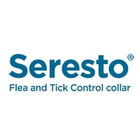
Introduction
Just like humans, dogs can suffer from allergies that affect their skin. These skin conditions can cause intense itching, discomfort, and irritation, leaving both pets and owners frustrated. Among the most common issues are dog skin allergies and allergic dermatitis. Understanding what causes these conditions, recognizing their symptoms, and selecting the best treatment options can help you keep your furry friend healthy and comfortable.
This article will walk you through everything you need to know about dog skin allergies and allergic dermatitis, from triggers to prevention and treatment strategies.
What Are Dog Skin Allergies and Allergic Dermatitis?
Dog skin allergies occur when a dog’s immune system overreacts to substances in their food, environment, or even parasites. Allergic dermatitis is the inflammation of the skin caused by an allergic reaction.
In simple terms, when a dog comes in contact with something they are sensitive to—like pollen, dust mites, or flea bites—their body responds with itching, redness, or other skin problems.
Common Causes of Dog Skin Allergies
- Flea Allergy Dermatitis (FAD)
-
Environmental Allergies (Atopy)
- Dogs can be allergic to pollen, grass, mold, or dust mites. These allergies are seasonal in some dogs but may persist year-round in others.
-
Food Allergies
- Specific proteins, such as those found in beef, chicken, dairy, or wheat, are common food allergens. Dogs with food allergies may experience chronic itching, digestive upset, or recurring ear infections.
-
Contact Allergies
- Some dogs are sensitive to shampoos, cleaning chemicals, synthetic fabrics, or certain types of bedding.
-
Secondary Infections
- Allergic reactions often cause dogs to scratch and bite their skin, which can lead to bacterial or yeast infections that exacerbate the problem.
Symptoms of Skin Allergies and Allergic Dermatitis
The signs of skin allergies in dogs can vary, but here are the most common symptoms:
- Persistent scratching, licking, or chewing of skin
- Redness, swelling, or inflammation
- Dry, flaky, or scaly skin
- Hot spots (painful, infected patches of skin)
- Hair loss around irritated areas
- Chronic ear infections or head shaking
- Unpleasant skin odor due to infection
If you notice these symptoms in your dog, it’s important not to ignore them. Prolonged itching and irritation can lead to secondary infections and severe discomfort.
How Are Dog Skin Allergies Diagnosed?
To determine the cause of allergies in dogs, veterinarians employ a range of diagnostic methods.
- Physical examination to identify skin irritation and possible flea infestations.
- Skin scrapings or cytology to check for mites, yeast, or bacteria.
- Elimination diet to identify food-related allergies.
- Allergy testing (intradermal or blood tests) to detect environmental allergens.
Correct diagnosis is key to effective treatment since skin allergies can resemble other skin conditions.
Treatment Options for Dog Skin Allergies
The treatment for dog skin allergies depends on the cause, but common approaches include:
-
Flea Control
- If fleas are the trigger, your veterinarian may recommend flea preventatives, such as oral medications, topical treatments, or collars. Consistent flea control is critical.
-
Medications
- Antihistamines: Help reduce itching in mild cases.
- Steroids or Corticosteroids: Used for short-term relief in severe cases, but long-term use can have side effects.
- Immunotherapy: Allergy shots or oral drops that desensitize the dog to specific allergens over time.
-
Topical Treatments
- Medicated shampoos, sprays, or ointments can soothe irritated skin, reduce inflammation, and prevent infection.
-
Dietary Management
- Switching to a hypoallergenic or limited-ingredient diet can help identify and manage food allergies. Omega-3 fatty acid supplements may also reduce inflammation and improve skin health.
-
Antibiotics or Antifungal Medications
- Prescribed if a secondary bacterial or yeast infection is present.
Home Care and Prevention Tips
In addition to veterinary treatment, pet parents can take proactive steps at home to manage dog skin allergies:
- Regular grooming: Brushing helps remove allergens like pollen and dust while keeping the coat healthy.
- Frequent bathing: Use gentle, vet-recommended shampoos to soothe itchy skin and wash away allergens.
- Vacuuming and cleaning: Reduce dust mites, pollen, and mold in your home.
- Flea prevention: Stay consistent with flea control products year-round.
- Balanced diet: Provide high-quality dog food that contains essential nutrients to support a healthy skin and coat.
- Moisturizing sprays: Help prevent dry, itchy skin.
When to Visit the Veterinarian
While mild itching is common in dogs, frequent or intense scratching is not normal. You should see a vet if:
- Your dog’s itching lasts for more than a week.
- You notice open sores, bleeding, or hair loss.
- Ear infections keep coming back.
- Your dog shows signs of distress or pain.
A timely veterinary consultation ensures your dog gets the proper treatment and prevents the condition from worsening.
Conclusion
Dog skin allergies and allergic dermatitis are common conditions, but with proper care, they can be effectively managed. Early recognition of symptoms, proper diagnosis, and consistent treatment make all the difference in your pet’s quality of life.
By working closely with your veterinarian and taking preventive measures at home, you can help your dog live a happy, itch-free life.
/*]]>*/






